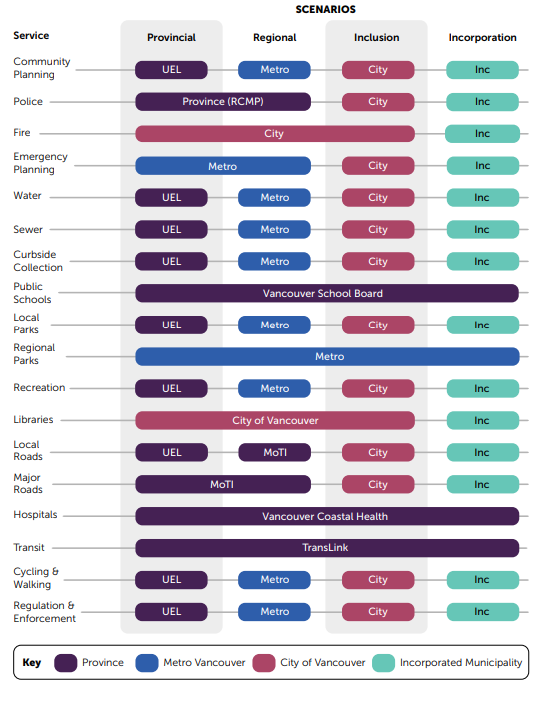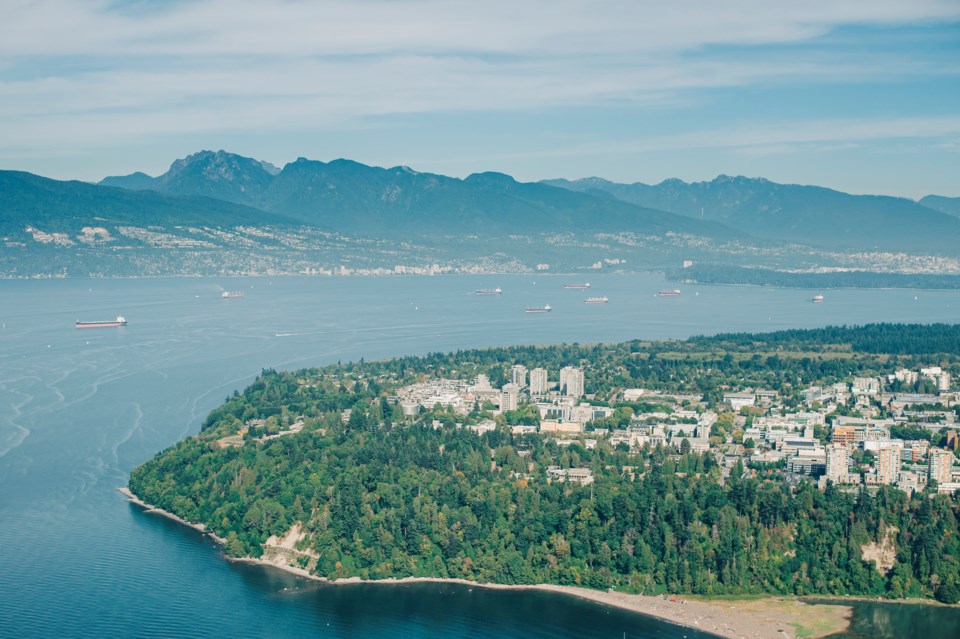The land the University of British Columbia's (UBC) main campus sits next to is unusual.
The University Endowment Lands (UEL), created (essentially) in 1911, isn't part of any municipal government, even though thousands of people live there. A recent report delved into whether that should change.
What's the situation now
"UEL holds the unique distinction in that it is the only urban area in British Columbia where local services and regulations are directly administered by the province of BC, through the Ministry of Municipal Affairs," explains the report.
Pretty much every large or moderately sized community in the province has a municipal government, like the City of Vancouver, District of North Vancouver, or Township of Langley.
Smaller, unincorporated communities are overseen by regional governments, like Metro Vancouver. Places like Ganges on Salt Spring Island or Roberts Creek on the Sunshine Coast fit into this, with services like fire departments or garbage organized by regional governments. The extremely remote Stikine region is the only other region directly under the province.
That said, the UEL has an elected representative within Metro Vancouver, and some services are provided through the regional district, like water supply and wastewater treatment. They also deal with all regional parks, like Pacific Spirit Park, which covers much of the UEL.
However, most things are dealt with by UEL's own administration under the province. UBC has its own administrative structure.
Scenarios from the report
With a population of around 3,200 estimated to more than double over the next 30 years, the report, which was finished in December 2022 and published earlier this month, has four scenarios for the future governance of the UEL.
Of those, they found two (maintaining the status quo or joining the regional government completely) would not solve one of the biggest issues: a lack of local representation.
Further, the status quo lacks transparency in decision-making and financial matters, would maintain an inappropriate level of involvement of the Province in local matters, and is inequitable as it affords privileges to the UEL which are not provided to other communities," explains the report.
"In contrast, the Regional District local service area scenario would concentrate decision-making authority in a model that is more appropriately suited for a rural context rather than the complexity of urban developments and levels of service," it adds.
The two other options the report looked at are both forms of "municipalization," which essentially means the UEL would become part of a city, or their own.
"Based on the analysis, the municipalization scenarios could, to varying degrees, effectively address the long-term service and governance needs of the UEL and are worthy of further evaluation," states the report.
It notes, however, more options may be developed overtime, and these options have not been fully fleshed out.

Joining the City of Vancouver
The report calls this the "inclusion" option.
In it, the UEL would become a neighbourhood under the governance of the City of Vancouver, like SFU in Burnaby or Thompson Rivers University in Kamloops.
This would mean a big change to the economics for UEL infrastructure and taxpayers, as they would join a large tax base but also be part of a much larger service area, sharing with the rest of the city.
It would also mean they'd fall under the unique legislation that is the Vancouver Charter. All but one of B.C.'s municipal governments fall under the Community Charter and Local Government Act. Vancouver is the one that doesn't, giving it slightly different administrative and regulatory powers.
Go it alone
The other option is the creation of a whole new municipal government and, essentially, town. It's called incorporation.
That would give all local government and service responsibilities to a newly formed government administration.
"All local government services and decision making would be undertaken as a part of the newly incorporated municipality, with an elected Mayor and Councillors," explains the report.
If residents of UEL did incorporate as a new town, it would be bigger than three other Metro Vancouver municipalities: Belcarra, Lions Bay, and Anmore.
This route would give the residents of the UEL more control over the community's future, but could also be costly as there's a limited tax base.
Decisions would have to be made about a wide variety of issues, including police services, fire departments and road maintenance. For example, they could decide to continue using the RCMP or sign an agreement with the City of Vancouver to be covered by the VPD.
The rest of Electoral Area A
Whatever is decided for, or by, the residents of the UEL, it will impact various residents across Metro Vancouver.
Electoral Area A, which the UEL is part of, includes several disconnected areas across Metro Vancouver. That includes Barnston Island in the Fraser River between Pitt Meadows and Surrey, Boulder Island in Indian Arm, a few properties on Carraholly Point on the Burrard Inlet east of Port Moody and the area north of West Vancouver and North Vancouver.
"Loss of assessment base in Electoral Area A may impact funding and potential service delivery in the remainder of Electoral Area A for those shared local services that UEL currently contributes towards," states the report.
- This story has been corrected. The UBC is next to the UEL, not on it.



